The Evolution Of Decking Materials
Selecting the ideal material for your deck can be a daunting task, given the plethora of options available. It’s fascinating to note that the materials used for deck construction have undergone a complete transformation over the years.
Our blog aims to guide you through this evolution, illustrating how the choices in decking materials have advanced to better cater to your requirements.
Join us as we explore both the past and the future of decking materials!
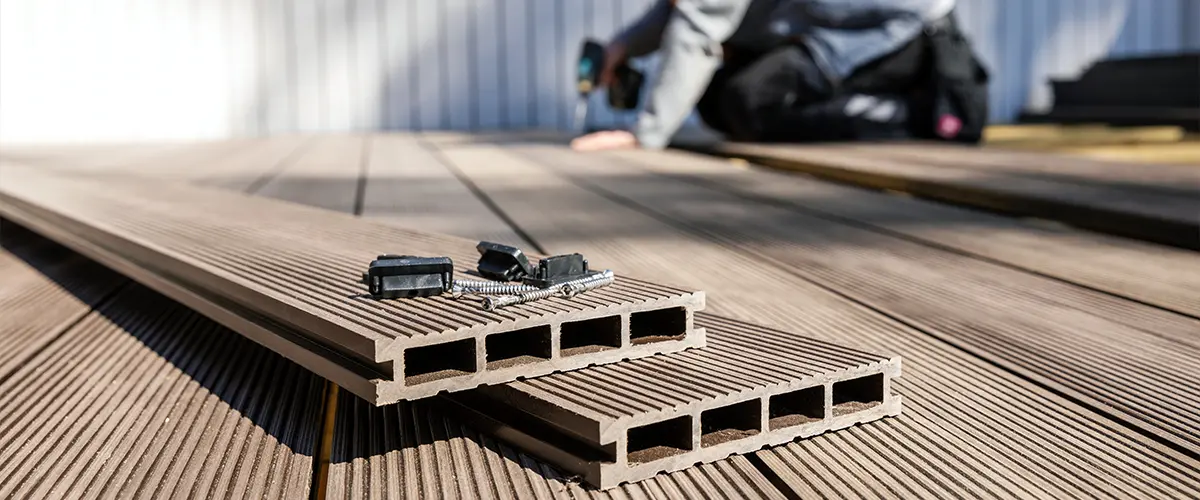
A Brief History of Decking Materials
Evolution from natural hardwood to composites
Natural hardwood has long been the choice for sturdy and beautiful decks, but over time, it has faced competition from innovative materials. Composite decking emerged as a strong alternative because of its durability and low maintenance requirements.
It combines wood fiber with plastic, often recycled, creating boards that resist rotting and warping unlike traditional wood decking.
The appeal of composite decking products lies in their extended lifespan without the need for constant upkeep like staining or sealing. These modern deck options quickly gained popularity among homeowners who wanted to spend more time enjoying their outdoor spaces rather than maintaining them.
Furthermore, advancements in how composite boards are made have continuously improved their look and feel, making them almost indistinguishable from natural wood while providing superior resilience against the elements.
Emergence of plastic decking
As the decking industry continued to innovate, a significant shift occurred with the emergence of plastic decking. This new type of decking offered remarkable durability and maintenance advantages over traditional wood and even early composite materials.
Plastic decks made from Polyvinyl Chloride or other synthetic resins became popular because they resist rotting, warping, and splintering—issues often associated with pressure-treated lumber and natural hardwoods.
Manufacturers started producing various styles of plastic composite decking boards that simulate the look of wood while providing increased longevity and minimal upkeep. These boards combine recycled plastics with other materials to create a product that stands up to weather and wear far better than its predecessors.
Homeowners now had access to a product that looked like classic wood but sidestepped many of its downfalls such as frequent staining or insect damage, ushering in an era where low-maintenance outdoor living spaces became more accessible than ever before.
Development of capstock technology
Capstock technology marks a significant leap in the evolution of decking materials. This innovative process involves wrapping a composite core with a sturdy, protective shell or “cap.” The cap defends against harsh weather, stains, and scratches that decks often face.
By merging the durability of plastics with the natural look of wood, capstock offers homeowners the best of both worlds.
Manufacturers use this cutting-edge technique to create wood plastic composite decking that stands up to years of outdoor use. The added layer not only extends the life of decks but also reduces maintenance needs.
No longer do deck owners need to worry about frequent staining or sealing like they would with traditional pressure treated lumber. Capstock’s resistance to fading and mold means more time enjoying your deck and less time working on it.
Rise of tropical hardwoods
The rise of tropical hardwoods in decking materials has been driven by their exceptional durability and natural beauty. These exotic woods, such as ipe and mahogany, offer a luxurious aesthetic that complements outdoor spaces.
Additionally, tropical hardwoods are renowned for their resistance to rot, decay, and insect damage, making them an ideal choice for long-lasting decks that require minimal maintenance.
As a result, tropical hardwoods have become popular among homeowners seeking high-end, low-maintenance decking options that add value to their properties.
From Past to Present: Explore the Evolution of Decking with Riverview Decks and Find Your Ideal Material
Ready to make an informed choice? Call Riverview Decks today, and let our experts guide you through selecting the ideal decking material for your dream outdoor space. (865) 801-4545
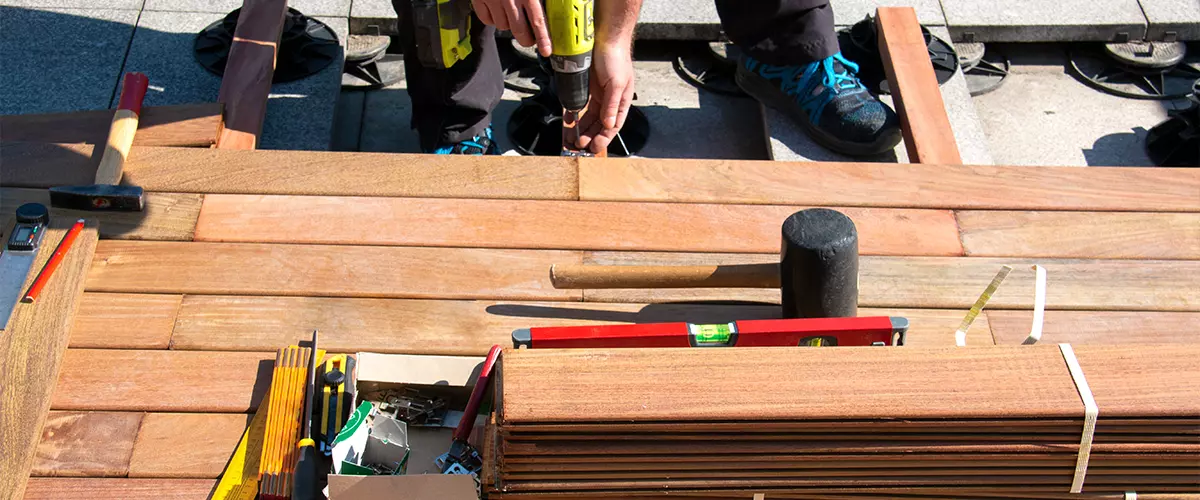
The Evolution of Manufactured Decking
Introduction of Trex decking revolutionized the industry with its durable, low-maintenance composite material that mimics the look of natural wood.
To learn more about the evolution of decking materials, keep reading!
Introduction of Trex decking
Trex decking revolutionized the industry with its introduction as a composite material in the 1990s. It is made of reclaimed wood and recycled plastic, offering durability and sustainability.
This innovative product quickly gained popularity for its low maintenance requirements and eco-friendly composition. Trex decking also stands out for its resistance to fading, staining, scratching, and mold growth.
The introduction of Trex decking marked a significant shift towards more sustainable and long-lasting decking materials. Its success has prompted continuous advancements in the field, driving further innovation in terms of both environmental impact and performance.
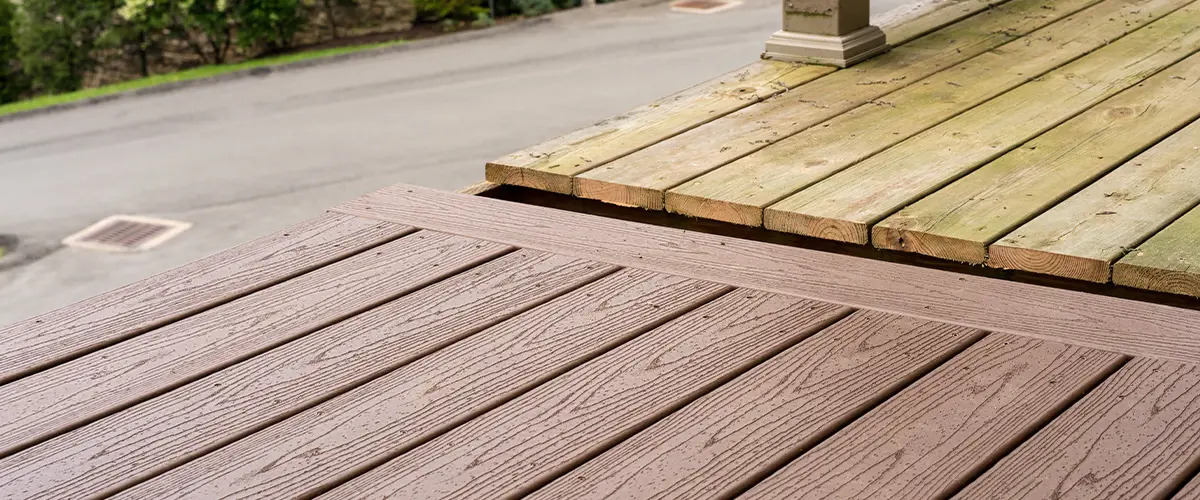
Advancements and improvements in recycled materials and technology
Following the introduction of Trex decking, the industry witnessed significant advancements and improvements in recycled materials and technology. Manufacturers are continuously innovating to develop more sustainable and environmentally friendly options for decking materials.
Recycled plastics, wood fibers, and other sustainable resources are being used to create durable and long-lasting composite decking materials.
These advancements have led to a wider range of color options, textures, and finishes that closely resemble natural wood while offering superior resistance to fading, staining, and mold.
The Current State of Decking Materials
Composite and plastic decking are currently the most popular materials, each with its own set of benefits and drawbacks.
To learn more about the evolution of decking materials, keep reading!
Popular use of composite and plastic decking
- They are popular for withstanding the elements, including moisture, insects, and rot. This makes them an excellent choice for outdoor spaces in various climates.
- Composite and plastic decking offer a wide range of color options and styles, allowing homeowners to achieve the desired aesthetic for their outdoor living areas.
- These materials require minimal upkeep, eliminating the need for staining, sealing, or painting year after year.
- They are eco - friendly options as they often consist of recycled materials such as wood fibers and plastics, contributing to sustainable practices in construction.
- Composite and plastic decking boast long lifespans, providing homeowners with a durable solution that withstands heavy foot traffic and outdoor activities without compromising on aesthetics or functionality.
Benefits and drawbacks of each material
Each decking material offers unique benefits and drawbacks. Here’s a comparative look at the primary options available on the market.
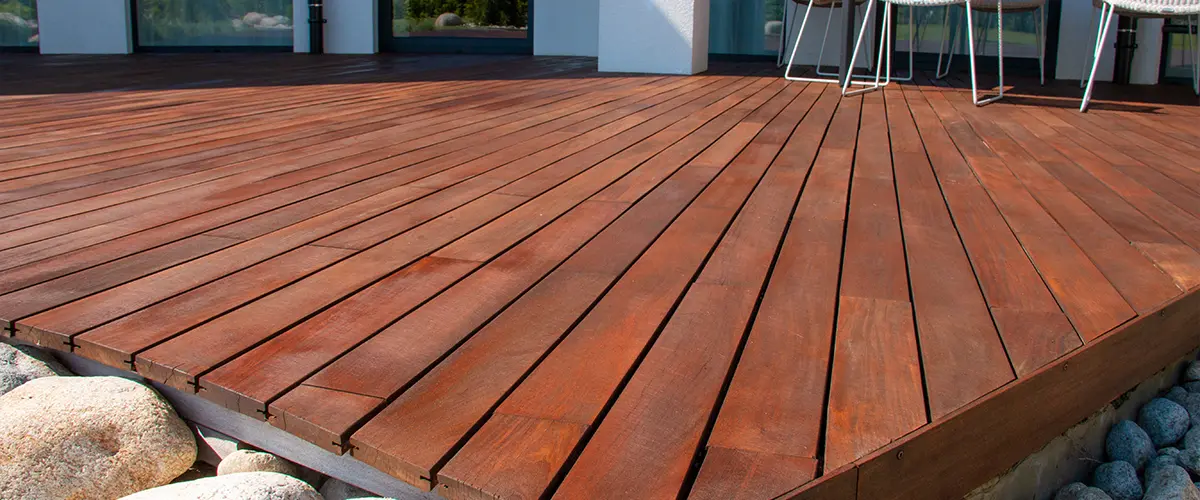
Natural Hardwood
- Timeless beauty
- Durability
- Durability
- Requires regular maintenance
- Prone to weathering
- Expensive
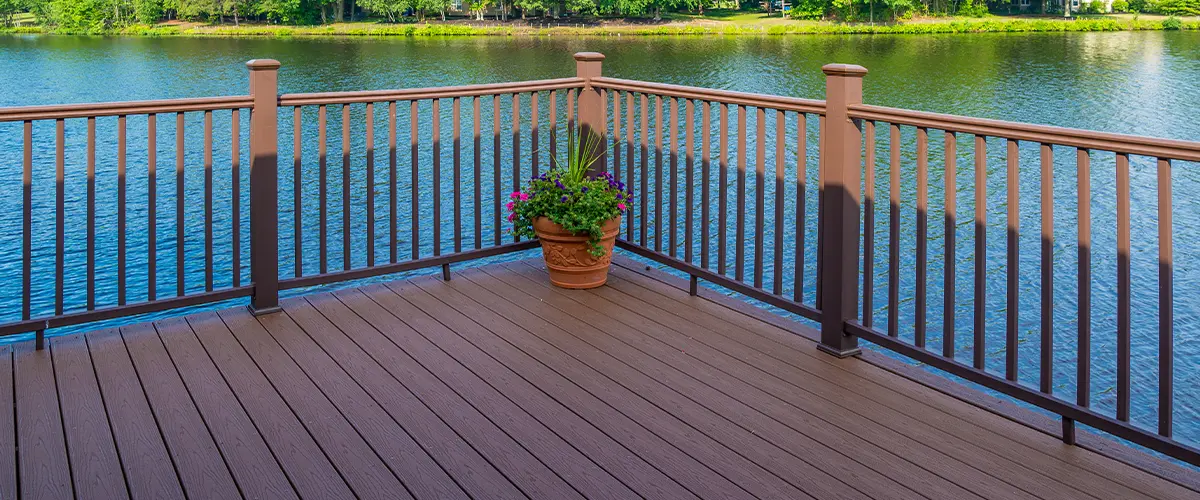
Composite Decking
- Low maintenance
- Resists fading and staining
- Eco-friendly options
- Can be more expensive than wood
- Potential for heat retention
- Limited repair options
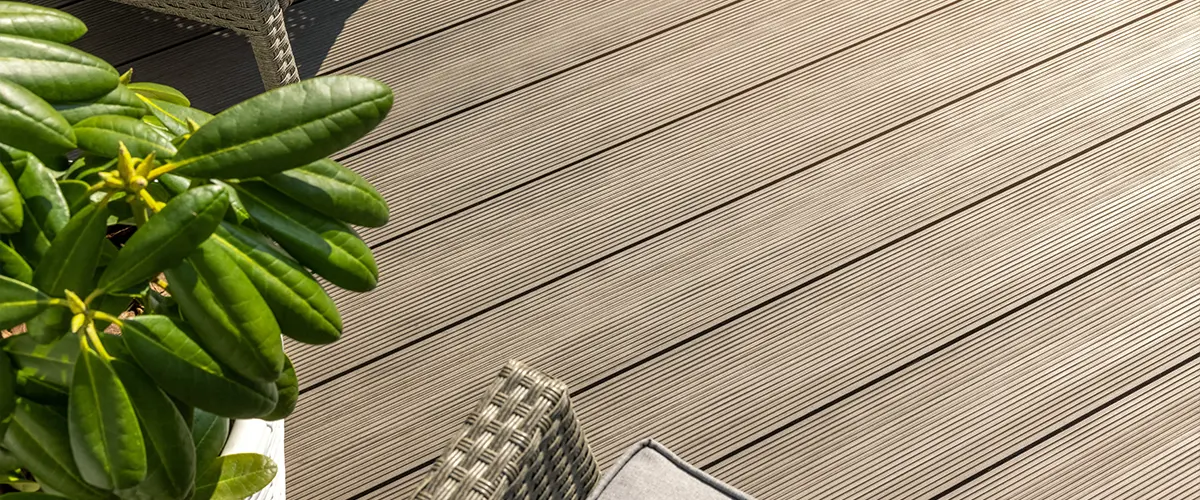
Plastic Decking
- No risk of rot or termites
- Lightweight
- Multiple color choices
- Feels less natural underfoot
- Can expand and contract
- High thermal expansion
Tropical Hardwoods
- Exceptionally durable
- Resistant to decay
- Unique appearance
- Difficult to work with
- Heavy
- Costly and often not eco-friendly
Capstock Decking
- Combines plastic and wood benefits
- Enhanced durability
- Superior resistance to elements
- Initially more expensive
- Can be slippery when wet
- Some capstock is prone to peeling
Homeowners continue to witness innovation and improvements in decking materials, making the selection process tailored to personal needs and environmental conditions.
Moving on, let’s delve into the current state of decking materials.
Continuous innovation and improvement in decking materials.
Decking materials continue to undergo significant innovation and improvement, driven by the demand for durability, sustainability, and aesthetics. Manufacturers are constantly developing new composite mixtures that enhance strength and weather resistance while reducing environmental impact through the use of recycled materials.
Advances in capstock technology have resulted in enhanced protection against fading, staining, and scratching, ensuring a longer lifespan for decking materials.
Moreover, ongoing research and development efforts aim to create low-maintenance options with realistic wood grain textures and color variations.
As a result, modern decking materials offer an impressive combination of durability, visual appeal, and eco-friendly composition.
Conclusion
In conclusion, the evolution of decking materials has seen a remarkable shift from natural hardwood to innovative composite and plastic options. Decking materials have come a long way with advancements such as capstock technology and the introduction of Trex decking.
Today, the popularity of composite and plastic decking continues to grow, offering both benefits and drawbacks for consumers. Continuous innovation ensures that the future holds even more exciting developments in the world of decking materials.
FAQs
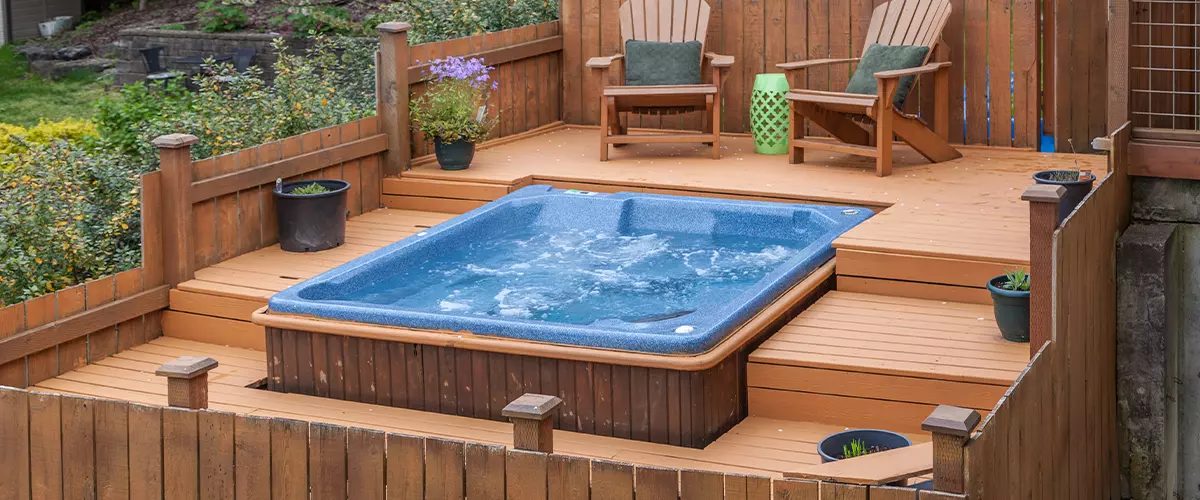
Unlock the Secrets of Decking Materials: Let Riverview Decks Guide You to the Perfect Choice
Discover the transformative world of decking materials with Riverview Decks! Our insightful blog post takes you through the advancements in decking, showing how far we’ve come to meet every homeowner’s needs in Tennessee.
Confused about which material to choose for your deck? Don’t navigate this journey alone! Contact Riverview Decks now, and our specialists will help you make the perfect choice for your outdoor haven. (865) 801-4545
